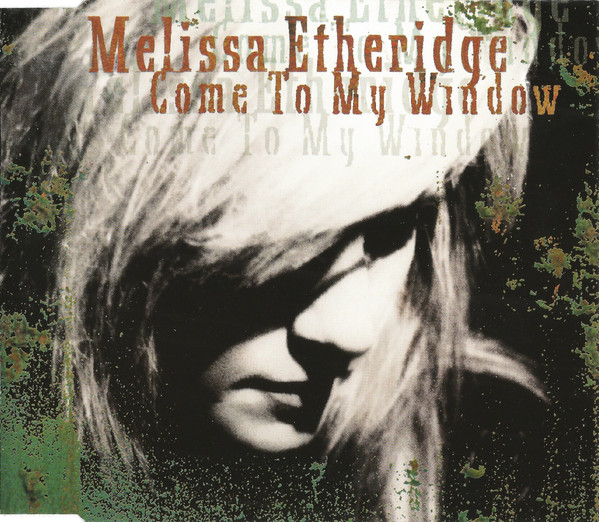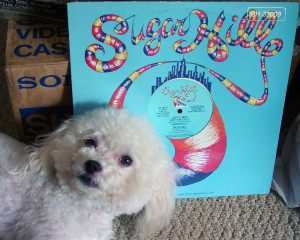Celebrating the birthday of the late Roy Orbison on today’s playlist.
Follow Tunes du Jour on Facebook
Follow Tunes du Jour on Twitter
Follow me on Instagram

Inspired by the May 29 birthdays of Oasis‘ Noel Gallagher, Spice Girls’ Mel B, Procol Harum’s Gary Brooker, Status Quo’s Francis Rossi, Melissa Etheridge, Disco Tex, Sylvia, Rebbie Jackson, The Hives’ Pelle Almqvist, LaToya Jackson, Danny Elfman and Churchill’s Bethany Kelly.
Nineteen fifty-seven was a banner year in the nascent days of rock and roll.
Buddy Holly and the Crickets had their first chart hit with “That’ll be the Day,” which hit #1 in September. “Peggy Sue” became their second top ten single before the year was out.
Sun Records, the label that brought us Elvis Presley (among others), released “Whole Lotta Shakin’ Going On,” performed by Jerry Lee Lewis. It became Lewis’ first hit single, peaking at #3.
Gospel singer Sam Cooke released his first secular recording on Keen Records. The song was “You Send Me,” and it spent three weeks at #1 in December. Cooke would go on to score 28 more top 40 pop hits.
The Everly Brothers cracked the pop chart for the first time with “Bye Bye Love,” which peaked at #2. Their follow-up single, “Wake Up Little Susie,” went to #1 and stayed there for four weeks.
Chuck Berry, who cracked the pop top ten in 1955 with “Maybellene,” had two more top ten hits in 1957 – “School Day” and “Rock & Roll Music.” He wouldn’t have a #1 single until 1972.
Elvis Presley was at #1 on the pop singles chart for exactly half the year with “All Shook Up,” “Jailhouse Rock,” “(Let Me Be Your) Teddy Bear,” and “Too Much.” So his increasing amount of fans wouldn’t be bothersome to his neighbors and to have more security, in 1957 Presley purchased the Graceland mansion in Memphis for $102,500.
Jackie Wilson, formerly a member of Billy Ward and His Dominoes, released his first solo single, “Reet Petite (The Finest Girl You Ever Want to Meet),” co-written by an up-and-coming songwriter named Berry Gordy, Jr. Though the song only reached #62 on the US pop chart, it went top ten in the UK, earning Gordy enough money to fund the launch of Motown Records. Ultimately, Wilson would have 24 top 40 hits on the US pop chart.
Little Richard, who first cracked the pop chart in 1956 with “Tutti-Frutti,” had three more top 40 hits in 1957 – “Keep a Knockin’,” “Jenny, Jenny” and “Lucille.” The latter hit #1 on the r&b chart, while the other two titles peaked at #2 r&b.
The Coasters teamed up with the production/songwriting team of Jerry Leiber and Mike Stoller and in doing so, scored with the double-sided hit single “Searchin’” (#3 pop / #1 r&b) and “Young Blood” (#8 pop / #1 r&b). With Lieber and Stoller The Coasters would score several more top ten hits over the next few years.
Also, in 1957, the television program American Bandstand was syndicated nationally. It would air for the next 32 years.
Tunes du Jour’s Throwback Thursday playlist this week focuses on the great music of 1957.
Click here to like Tunes du Jour on Facebook.
Follow me on Twitter: @TunesDuJour.
 Ten Facts about Grandmaster & Melle Mel’s “White Lines (Don’t Don’t Do It)”
Ten Facts about Grandmaster & Melle Mel’s “White Lines (Don’t Don’t Do It)”
1. Yes, the word “don’t” is repeated in the parenthetical.
2. Melle Mel was the most prominent rapper in Grandmaster Flash and the Furious Five. Grandmaster Flash was the DJ, not a rapper.
3. Though credited to Grandmaster & Melle Mel, Grandmaster Flash does not appear on “White Lines,” nor did he appear on the classic “The Message” (“it’s like a jungle sometimes / It makes me wonder how I keep from going under”). Forced out of the group that bore his name, Flash sued Melle Mel and their label, Sugarhill Records, over the use of his name to sell records, the result of which was the odd artist credit on the “White Lines” single.
4. Flash heard “White lines,” about the dangers of cocaine addiction, while on his way to buy crack.
5. Grandmaster Flash and Melle Mel reunited in 1987 at a charity concert hosted by Paul Simon.
6. The bassline was lifted from Liquid Liquid’s “Cavern.”
7. The record credits Melle Mel and Sylvia Robinson as the song’s writers. Robinson was the head of Sugarhill Records. Previously, she had a hit in 1973 with “Pillow Talk,” a song she wrote for Al Green, who declined to record it, and as one-half of Mickey & Sylvia, she took the classic ”Love is Strange” to #11 in 1957.
8. The lyrics include a reference to car manufacturer John DeLorean (“A businessman is caught with 24 kilos”). In 1982 the FBI arrested DeLorean for purchasing 24 kilos of coke. The song compares his fate (“He’s out on bail and out of jail”) with that of an inner city youth (“A street kid gets arrested, gonna do some time. He got out three years from now just to commit more crime.”).
9. An unofficial music video for the song was directed by an NYU student named Spike Lee. It starred Laurence Fishburne, the actor who at that time was playing Cowboy Curtis on Pee-Wee’s Playhouse.
10. The record hit the top ten on the US dance chart in 1983. It kicks off Tunes du Jour’s weekly dance party.
Click here to like us on Facebook!